9 July
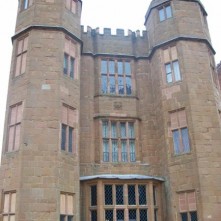
Kenilworth Castle
1539 – Execution of Sir Adrian Fortescue, courtier and landowner, on Tower Hill. He was condemned for treason by act of attainder, but it is not known what he had done to deserve this. He was beatified in 1895 as a martyr, but historian Richard Rex points out that he is unlikely to have opposed Henry VIII's supremacy because he was a cousin of Anne Boleyn.
1540 - It was declared that the marriage of King Henry VIII and Anne of Cleves was null and void, and that both parties were free to marry again. The couple had only been married six months.
1553 – Nicholas Ridley, Bishop of London, preached at St Paul’s Cross denouncing Henry VIII’s daughters, Mary and Elizabeth, as bastards. The congregation were “sore annoyed with his words”.
1553 – The Duke of Northumberland officially informed Lady Jane Grey of Edward VI’s death in front of the Council and nobles, going on to explain the terms of Edward’s will which named Lady Jane Grey as the heir to the throne. Lady Jane Grey accepted that she was Queen.
1553 – Mary (future Mary I) wrote to the Privy Council stating her claim to the throne and demanding their allegiance. Click here to read more.
While Mary was writing this letter, John Dudley, Duke of Northumberland, was informing his daughter-in-law, Lady Jane Grey, of Edward VI's death and informing her that the King had nominated her as his successor. Jane collapsed weeping and declared "The crown is not my right and pleases me not. The Lady Mary is the rightful heir." Northumberland and Jane's parents then explained Edward's wishes to the distressed Jane, and she accepted the crown as her duty.
1575 (9th-27th) – Elizabeth I was entertained at Kenilworth Castle by Robert Dudley, Earl of Leicester. It was a special visit in that it lasted nineteen days and was the longest stay at a courtier’s house in any of her royal progresses. We know a substantial amount about Elizabeth’s visit to Kenilworth because it was recorded in a letter by Robert Langham, a member of Dudley’s household, and in an account by poet and actor George Gascoigne, a man hired by Robert Dudley to provide entertainment during the royal visit. Click here to read more about it.
1586 – Death of Edward Sutton, 4th Baron Dudley, soldier and landowner, at Westminster. He was buried in St Margaret's, Westminster. Sutton served as a soldier in Henry VIII's reign in Ireland and Boulogne, and in Edward VI's reign against the Scots. He was made a Knight of the Bath at Mary I's coronation, and then given Lordship of Dudley Castle, where he entertained Elizabeth I in 1575.
10 July
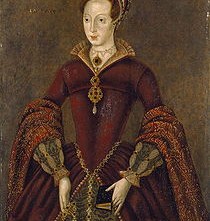
Lady Jane Grey
1553 - Lady Jane Grey, her husband, Guildford Dudley, her parents and Guildford’s mother arrived by barge at the Tower of London, having travelled from Syon. Two heralds then proclaimed that Lady Jane Grey was now Queen of England before they moved on to proclaim their message in Cheapside and Fleet Street. Click here to read more.
1553 - A letter arrived from Mary, daughter of Henry VIII, informing the council that she was the rightful heir to the throne, not Lady Jane Grey, and demanding their support.
1559 – Death of Henry II of France. He had been injured in a joust on 30th June when he was hit in the face by a lance. It is thought that a splinter entered his eye and went into his brain. He was buried in the Saint Denis Basilica.
1559 – Accession of Francis II and Mary, Queen of Scots as King and Queen of France.
1584 – Assassination of William of Orange, also known as William the Silent or William I, Prince of Orange. He was shot in the chest at his home in Delft by Balthasar Gérard, a Catholic Frenchman. A reward of 25,000 crowns had been offered by Philip II of Spain for the assassination of William, who was the main leader of the Dutch Protestant revolt against Spanish forces in the Netherlands. William was buried in the New Church in Delft. Gérard was captured and was tortured for days before being executed on 14th July 1584.
1584 – Execution of Francis Throckmorton, Catholic conspirator, at Tyburn for high treason after he was found guilty of conspiring to remove Elizabeth I from the throne and to replace her with Mary, Queen of Scots. It appears that Throckmorton was acting as an intermediary between Mary, Queen of Scots and Mendoza, the Spanish ambassador.
1588 – Death of Edwin Sandys, Archbishop of York. He was buried in Southwell Minster.
11 July
1533 – Pope Clement VII ordered Henry VIII to abandon Anne Boleyn and drew up a papal bull excommunicating Henry VIII. He held off issuing it in the hope that Henry would abandon Anne, and in the end the bull was not issued until 1538.
1536 – Death of Desiderius Erasmus, the famous Humanist scholar, from dysentery at Basel during the night of the 11th/12th July. He was buried in the cathedral at Basel on 18th July. His works included Novum Instrumentum omne (a Latin translation of the epistles and gospel), “The Praise of Folly,” “De Copia”, “Adagia” and “The Education of a Christian Prince”.
1558 – Baptism of Robert Greene, writer and playwright, at St George's Church, Tombland, Norwich. His works included the plays “The Scottish History of James IV” and “Friar Bacon and Friar Bungay”, and the romance “Mamillia”.
1564 – The plague hit Stratford-upon-Avon in Warwickshire. The epidemic lasted six months and killed over 200 people, around a fifth of the population. William Shakespeare was born in April of that year, and his family were fortunate in escaping the plague.
12 July
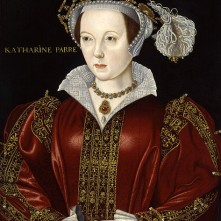
Catherine Parr
1537 – Execution of Robert Aske, lawyer and rebel. He was hanged in chains outside Clifford's Tower, the keep of York Castle. Aske was one of the leaders of the rebels in the 1536 northern uprising known as the Pilgrimage of Grace. Click here to read more.
1543 - King Henry VIII married his sixth and final wife, Catherine Parr, in the Queen’s Closet at Hampton Court Palace. Click here to read more.
1548 – Death of Stephen Borough, navigator and naval administrator, at Chatham in Kent. He was buried in St Mary's Church, Chatham. His memorial brass paid tribute to his career:
“He in his lifetime discovered Moscovia, by the northern sea pasage to St Nicholas, in the yere 1553. At his setting forth of England he was accompanied in his ship by Sir Hugh Willoughbie, being Admirell of the fleete, who, with all the company of the said two shippes, were frozen to death in Lappia the same winter. After his discoverie of Roosia and the costes adjoyning to wit Lappia, Nova Zembla, and the c***ry of Samoyeda etc: he frequented the trade to St Nicholas yearlie, as chief pilot for the voyages, until he was chosen one of the four principal Masters in ordinarie of the Queen's Majesties royall Navy, where in he continued in charge of sundrie sea services till time of his death.”
1549 – The rebels of Kett's Rebellion set up camp on Mousehold Heath, overlooking Norwich.
1555 – Burnings of preachers John Bland and John Frankesh, rector Nicholas Sheterden and vicar Humphrey Middleton at Canterbury. They were all Protestants burned for heresy.
1581 – Death of Maurice Chauncy, martyrologist, Carthusian monk and prior of Sheen Anglorum Charterhouse at Nieuwpoort in Flanders. He died in the Paris Charterhouse on his way back to Flanders from Spain, where he had been trying to get funding for the Charterhouse.
1598 – Execution of John Jones, Franciscan friar, at St Thomas's Waterings, Southwark. He was hanged, drawn and quartered for being a Catholic priest.
13 July
1527 - Birth of John Dee, astrologer, mathematician, alchemist, antiquary, spy, philosopher, geographer and adviser to Elizabeth I and various influential statesmen during her reign, in London. Click here to read more about him.
1551 – Death of Sir John Wallop, soldier and diplomat, at Guînes from sweating sickness. His body was buried at Guînes, but then moved to the parish church at Farleigh Wallop, his home town.
1566 – Death of Sir Thomas Hoby, diplomat, courtier and translator, at Paris. He was buried in Bisham parish church. His translations included “The Gratulation of M. Martin Bucer unto the Church of England” (1549) and Castiglione's “Il cortegiano” (1561).
1612 – Death of Edward Seymour, Viscount Beauchamp, eldest son of Edward Seymour, 1st Earl of Hertford, and Lady Katherine Grey, at Wick in Wiltshire. He was buried first at Bedwyn Magna and then in Salisbury Cathedral.
1626 – Death of Robert Sidney, 1st Earl of Leicester, poet and courtier, at Penshurst Place. He was buried at Penshurst on the 16th July. His notebook, which still survives today, holds a collection of poems and sonnets, and also shows the revisions he made to them. Click here to read more about his poems.
14 July
1486 – Death of Margaret of Denmark, Queen of Scots and consort of James III, at Stirling Castle. She was buried in Cambuskenneth Abbey. False rumours spread that she had been murdered by poison by John Ramsay, 1st Lord Bothwell, but there was no evidence of this.
1514 – Death of Cardinal Christopher Bainbridge, also Ambassador and Archbishop of York, in Rome. His death was controversial, in that his servant, Raimondo da Modena, confessed to poisoning him on the orders of Silvestro Gigli, Bishop of Worcester, and the English ambassador at Rome. He was buried in chapel of the English Hospice (now the English College) in Rome.
1544 – Henry VIII landed at Calais in preparation for the Siege of Boulogne, which began five days later.
1551 – Deaths of Henry Brandon and Charles Brandon, sons of the late Charles Brandon, Duke of Suffolk, and Catherine Brandon (née Willoughby), Duchess of Suffolk, from sweating sickness in Buckden, Huntingdonshire. They were buried at Buckden. Charles survived his brother by just half an hour.
1575 – Death of Richard Taverner, evangelical reformer and translator, at Woodeaton in Oxfordshire. Taverner is known for his Bible translation known as “Taverner's Bible”, or, to give it its full name, “The Most Sacred Bible whiche is the holy scripture, conteyning the old and new testament, translated into English, and newly recognized with great diligence after most faythful exemplars by Rychard Taverner”. He was buried in the parish church at Woodeaton.
1599 – Death of Sir Robert Salesbury, member of Parliament, Justice of the Peace and Deputy Lieutenant of Denbighshire.
1621 – Death of Edmund Hooper, composer and organist of Westminster Abbey and the Chapel Royal, in London. He was buried in the cloisters of Westminster Abbey.
15 July
1497 – Birth of William Neville, poet. He was the son of Richard Neville, 2nd Baron Latimer, and his wife, Anne (née Stafford). Neville was the author of the allegorical ‘The Castell of Pleasure’.
1553 – The royal ships guarding the Eastern coast for 'Queen Jane' swapped their allegiance to 'Queen Mary'. Click here to read more.
1556 – Beginning of the trial of Julins Palmer, John Gwyn and Thomas Robyns, now known as the Newbury Martyrs. They were tried for sedition and heresy at St Nicholas Church, Newbury.
1561 – Death of William Bill, Dean of Westminster, at Westminster. He was buried in St Benedict's chapel, Westminster Abbey. Bill's other offices included Master of St Johns College, Cambridge, Vice-Chancellor of the University of Cambridge, Master of Trinity College, Cambridge, and Provost of Eton College.
1573 – Birth of Inigo Jones, architect and theatre designer, in London. Jones is known for his design of the Banqueting House, the Queen's House at Greenwich and his stage design work, in collaboration with Ben Jonson.
1597 – Death of Sir Robert Dillon, lawyer, judge, Privy Councillor and Chief Justice of Common Pleas, at Riverston, County Meath, Ireland. He was buried in the parish church at Tara.

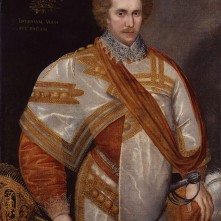


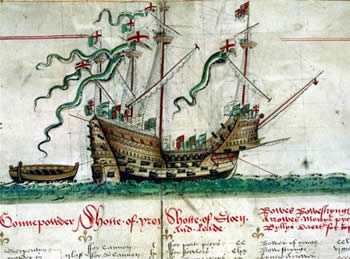

Leave a Reply